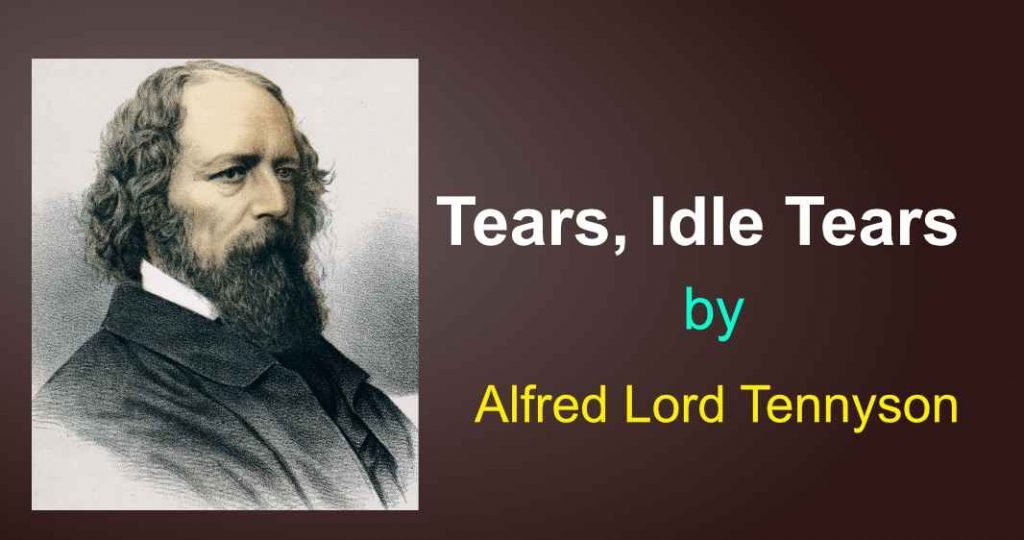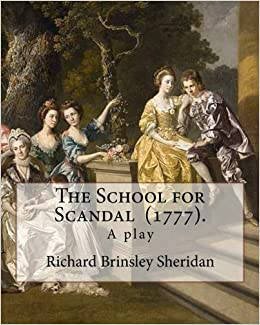Introduction: The famous poem of Victorian Era “The Princess” which was published in 1847, was composed by the most representative poet of this age, who was also a Poet Laureate of the U. K (1850 to 1892) Alfred Lord Tennyson. Actually, the song “Tears Idle Tears” which is also noted for lyric/lyrical richness as well as for ambiguity and tones of paradox occurs in “The Princess”.

Before Tennyson it was the famous Romantic poet William Wordsworth (1770 – 1850) who visited the Tintern Abbey in July 1798 and being inspired by this location he wrote a superb poem – “Lines a Few Miles Above Tintern Abbey”, or, it is generally called as “Tintern Abbey”. Like Wordsworth Tennyson also Visited the Tintern Abbey and he was there inspired to compose “Tears, Idle Tears.” Moreover, like Wordsworth’s “Tintern Abbey”, “Tears, Idle Tears” also develops a similar theme.
“Tears, Idle Tears” Summary and Analysis of the Poem
Table of Contents
The speaker of the poem is very sad. His eyes are filled with tears. But he calls them (tears) useless or idle because he doesn’t know the ( exact) reason why these tears are in his eyes. But the rest lines of the opening stanza (lines 2 – 5 of stanza 1) provide some clarifications regarding the speaker/protagonist’s sorrows as well as his tears. It is due to some innermost “divine despair” that tears the first rise in his heart and then come to his eyes when he looks “on the happy autumn – fields” of the Tintern Abbey and after that thinks of those charming, lovely and happy days “are no more”.
Critical Appreciation ‘Tears Idle Tears ‘
The speaker has not forgotten his happy days of the past till now. For him, even now; those golden days are fresh like the sunlight’s first beam glitters on the sail of a boat. The boat; it appears, is bringing back his (speaker/ poet’s) dead friends from the other side of the world.
The Remembering of those days of the past is not only fresh, it is sad as well. It is sad like the sunlight’s last red beam sparkles on a ship; at the time of setting the sun – in the evening. The ship/boat – it seems; slowly carries away the poet’s dear (friends or his relatives) and goes down into the sea. In this way, the speaker’s memory of his past days, though it is both happy and sorrowful is very important to him.
The speaker once more refers to the days of the past not only sad but strange as well. Those days are both sad and strange like the songs of those birds who are not fully awake from their sleep; they sing in the early morning in the ” dark summer dawns”. These half-awaken birds are singing to a man who is near to die and his sense of sight as well as his sense of sound are not working properly.
The person with his ” dying eyes” watches the window of his room that “slowly grows” into a square and the dim/unsteady light is coming to the room through this square. Though, those days (which are mentioned here) are not happy days of the speaker’s life; they were strange as well as sorrowful for him, but he longs for more such types of days in his life.
The days of the past, to which the poet/protagonist/speaker has not forgotten even now; they are very dear to him. They (The days of past) are so dear like the memory of the loving kisses of the lover/beloved to his/her beloved/lover after death, or it may be someone else also.
The days of past are also sweet like the (imaginary) kisses of a hopeless lover in his imagination on the lips which are not for him; but they are for any other person, as the beloved has rejected his love ( the love of the hopeless lover who can kiss her only in his imagination) and she is in love with some other person.
Moreover, the memory of those days is very deep as the memory of the first love to which lovers never forget. It is also wild like the regret that often follows this (types of) experience. The poet calls those days the “Death in life” and in this way, he ends the lyric “Tears Idle, Tears“.
In which canto of Tennyson’s poem u0022The Princessu0022 the song u0022Tears, Idle Tearsu0022 occurs?
In lVth canto of the u0022 The Princessu0022 the song u0022Tears, Idle Tearsu0022 occurs.
Cite at least two characteristics of the poem u0022Tears, Idle Tearsu0022
The Note of melancholy and vivid use of imagery are some of the characteristics of u0022Tears, Idle Tearsu0022.
What is the major theme of the lyric u0022Tears, Idle Tearsu0022?
Recollection of the past and how it makes a man (of common sense) sad as well as happy – is the central theme of this poem.
In what kind of verse u0022Tears Idle Tearsu0022 is composed?
The poem is composed in blank verse
Who put the lyric u0022Tears Idle Tearsu0022 to music in the nineteenth century?
It was Edward Lear who put the poem u0022Tears, Idle Tearsu0022 to music in the nineteenth century.
Conclusion
The poet while at the visit of the Tintern Abbey looks at the fields of that place. It reminds him, his days of past both happy as well as sorrowful. And it is the subject matter of this fine lyric. Additionally, the poem is also notable for its use of literary techniques and devices such as alliteration, personification, refrain and transferred epithet etc. But, aside from the above all, Tennyson used a figure of speech freely which is called simile and it is found in all the four stanzas of the poem.




